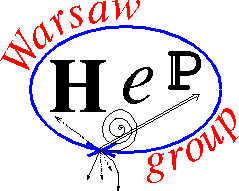SEMINARIUM FIZYKI WIELKICH ENERGII
Dnia 24 maja (piątek) o godzinie 10:15, w sali B2.38 odbędzie się seminarium, na którym zostanie wygłoszony referat pt.:
„The Standard Model electroweak sector after Run 2 – selective review of CMS results”
Referuje: dr hab. Michał Szleper, prof. NCBJ (NCBJ)
Run 2 of the Large Hadron Collider has produced a lot of results from the electroweak sector of the Standard Model. This includes measurements that shed light on the interactions between vector bosons – triple and quartic gauge couplings – based on a variety of physics processes: from inclusive diboson production to single boson in vector boson fusion mode, vector boson scattering and triboson production. In this seminar we will review the importance and role of triple and quartic gauge couplings in the search for physics beyond the Standard Model and how we measure them. I will give an overview of CMS results obtained from Run 2 data and discuss what should and can be improved in Run 3 and the HL-LHC.
Serdecznie zapraszamy
dr hab. Katarzyna Grzelak
prof. dr hab. Aleksander Filip Żarnecki

